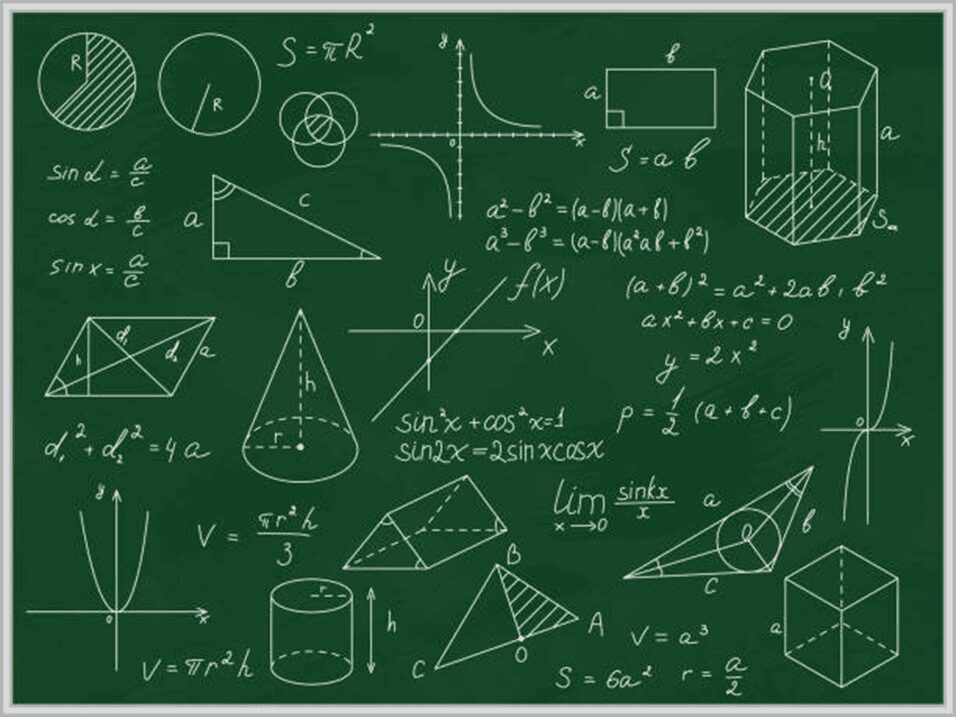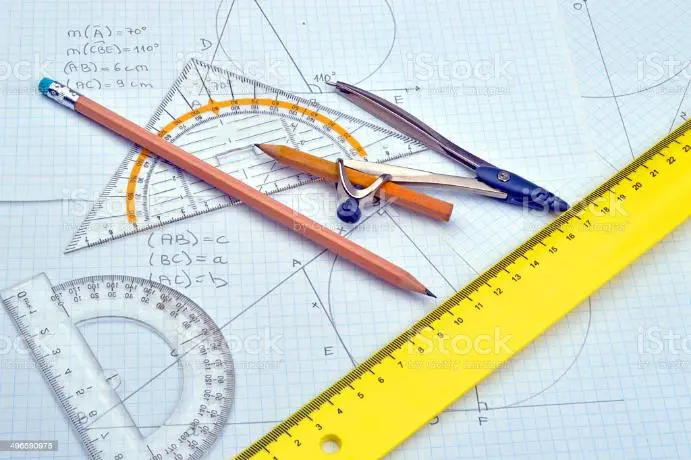Geometry Scope and Sequence
Students will be able to:
- Derive and use the distance, slope and midpoint formulas in one- and two-dimensional coordinate systems.
- Use distance, slope and midpoint formulas to verify geometric relationships, including congruence of segments and parallelism or perpendicularity of pairs of lines.
- Determine an equation of a line parallel or perpendicular to a given line that passes through a given point.
- Distinguish between undefined terms, definitions, postulates, conjectures and theorems.
Activities
- Exploring Linear Functions
- Points, Lines and Angles—Always,Sometimes,Never
- Slopes of Parallel and Perpendicular Lines Inquiry
- Understanding the Distance Formula
Students will be able to:
- Identify the converse, inverse and contrapositive of a conditional statement, and determine its validity.
- Recognize a biconditional statement as a true conditional statement with a true converse.
- Use counterexamples to verify that a conjecture is false.
Activities
- Conditional Statements
- Conditionals in Mathematics
- OnOneCondition
Students will be able to:
- Use a compass and straightedge to construct segments, congruent angles, segment and angle bisectors, perpendicular lines and perpendicular bisectors, and lines parallel to a given line through a point not on the line; use the constructions to make conjectures about geometric relationships.
- Analyze patterns of angle measures to make conjectures about angles formed by intersecting lines and parallel lines cut by a transversal.
- Verify theorems and solve problems about angles formed by parallel lines and transversals and use these relationships to solve problems.
- Prove equidistance between the endpoints of a segment and points on its perpendicular bisector and use this relationship to solve problems.
- Derive formulas for the measures of interior and exterior angles of polygons.
- Explore relationships created by special segments of triangles and diagonals of quadrilaterals.
Activities
- Basic Geometric Constructions
- Angles in a Triangle
- Angles and Lines at a Point
- Angles of Polygons
- Transversals
Students will be able to:
- Verify the Triangle Inequality Theorem and apply it to solve problems.
- Determine the conditions required for triangle congruence.
- Prove two triangles are congruent by applying the triangle congruence conditions.
- Identify congruent figures and their corresponding sides and angles.
- Prove segments or angles congruent by applying the corresponding parts theorem.
- Verify theorems about relationships in triangles, including the sum of interior angles, base angles of isosceles triangles, midsegments, and medians, and use these relationships to solve problems.
Activities
- Triangle Sides and Angles
- Interior and Exterior Angles of a Triangle
- Congruent or Not
Students will be able to:
- Describe and perform transformations of figures in a plane using coordinate notation.
- Determine the image or pre-image of a two-dimensional figure under a composition of transformations.
- Identify the sequence of transformations that will carry a given pre-image onto an image.
- Apply the definition of congruence, in terms of rigid transformations, to identify congruent figures and their corresponding parts.
- Distinguish between reflectional and rotational symmetry in a plane figure.
Activities
- Reflections
- Rotations
- Scale Factor
- Transformations
Students will be able to:
- Apply the definition of similarity in terms of a dilation to identify similar figures and their proportional sides and the congruent corresponding angles.
- Prove the Angle-Angle Theorem and the Triangle Proportionality Theorem and apply them to solve problems.
- Identify and apply the relationships that exist when an altitude is drawn to the hypotenuse of a right triangle, including the geometric mean, to solve problems.
Activities
- Midsegments of Triangles
- Sidesplitter Theorem
- Geometric Mean
Students will be able to:
- Explore proofs of the Pythagorean Theorem.
- Use Pythagorean triples, the Pythagorean Theorem, and the converse of Pythagorean Theorem to solve problems involving the measures of the sides and angles of a right triangle.
- Apply the relationships in special right triangles (30-60-90 and 45-45-90) to solve problems.
- Determine the measures of the sides and angles of a right triangle by applying the trigonometric ratios (sine, cosine, tangent).
Activities
- Pythagorean Theorem
- Special Right Triangles
- Trig Ratios
Students will be able to:
- Prove a quadrilateral is a parallelogram, rectangle, square or rhombus using opposite sides, opposite angles, or diagonals.
- Apply theorems about quadrilaterals to solve problems.
Activities
- Parallelogram Properties Interactive Worksheet
- Properties of Parallelograms
- Rhombi, Kites and Trapezoids
- Quadrilateral Property Sort
- Working with Quadrilaterals Circuit Training
Students will be able to:
- Investigate patterns in special segments and angle measures of circles.
- Apply theorems about circles, including relationships among angles, radii, chords, tangents, and secants, to solve problems.
- Apply the proportional relationship between the measure of an arc length and the circumference of a circle to solve problems.
- Describe radian measure of an angle as the ratio of the length of an arc intercepted by a central angle and the radius of the circle.
- Relate the equation of a circle to the distance formula.
- Determine the equation for the graph of a circle.
Activities
- Circle Vocabulary Activity
- Angles and Arcs
- Circle Product Theorems
- Putting It All Together (Circles)
Students will be able to:
- Derive and apply the formulas for the area of regular polygons to solve problems using appropriate units of measure.
- Determine the area of composite two-dimensional figures comprised of a combination of polygons and/or sectors of circles to solve problems, using appropriate units of measure.
Activities
- Area of a Regular Polygon
- Boardroom Table
- Arcs, Sector Areas and Segment Areas Grudgeball
Students will be able to:
- Identify the shapes of two-dimensional cross-sections of prisms, pyramids, cylinders, cones, and spheres.
- Identify three-dimensional objects generated by rotations of two-dimensional shapes.
- Derive and apply the formulas for the total and lateral surface area of three-dimensional prisms, pyramids, cones, cylinders, spheres, and composite figures to solve problems, using appropriate units of measure.
- Derive and apply the formulas for the volume of three-dimensional figures, including prisms, pyramids, cones, cylinders, spheres, and composite figures, to solve problems, using appropriate units of measure.
- Determine how changes in the linear dimensions of a shape affect its perimeter, area or volume, including proportional and non-proportional dimensional change.
Activities
- Surface Area of a Cylinder
- Family Tent Quandary
- Volume of Solids Chain Activity
- Wax Museum
- Making a Splash
Students will be able to:
- Develop strategies to use permutations and combinations to solve problems.
- Determine probabilities based on area to solve contextual problems.
- Identify whether two events are independent and compute the probability of two events occurring together with or without replacement.
- Apply conditional probability to solve contextual problems.
- Apply independence in contextual problems.
Activities
- Permutations and Combinations Formula Discovery
- Coin Toss Games
- Permutations and Combinations Calculator Activity

